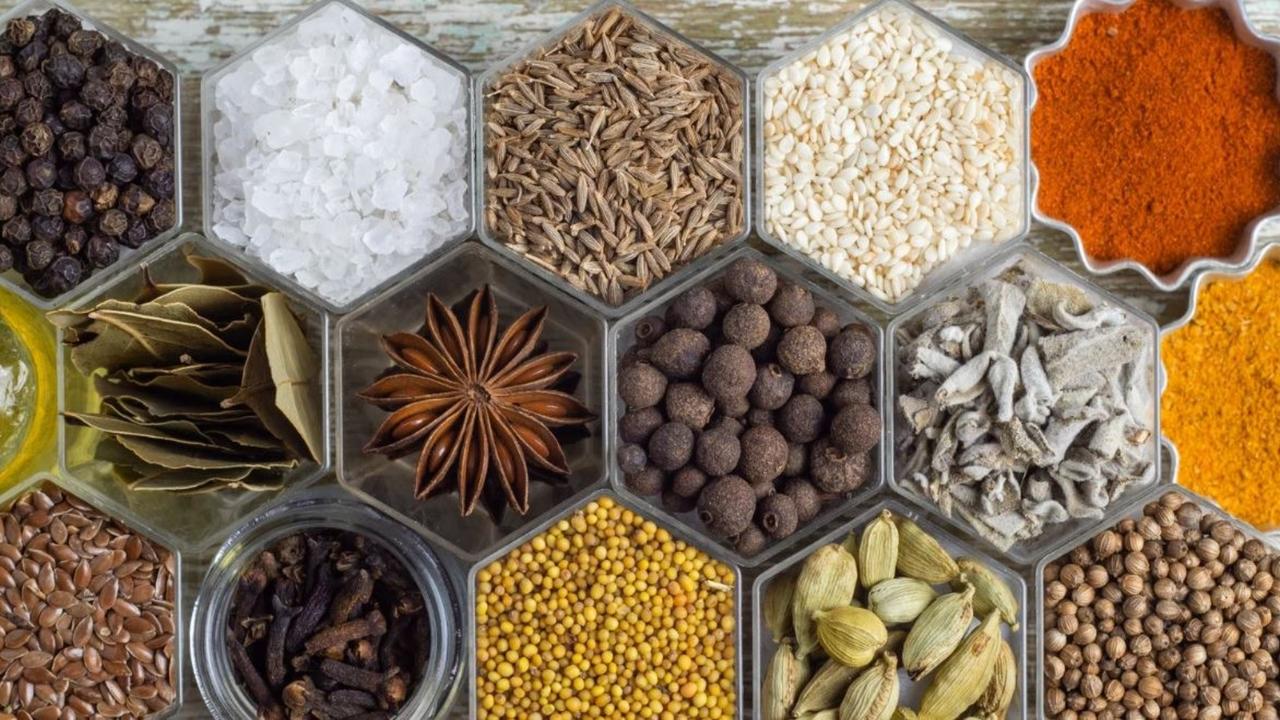When it comes to the botanicals in gin, it's a mysterious world. Master distillers partner a plethora of ingredients together to produce a wholly unique and delicious tasting spirit. Whether it be berries, peels, seeds, roots or even bark, everything adds a little bespoke twist to the flavour.
Get to know the three main botanicals, as well as the other commonly-used ingredients that contribute to your gin experience, one Gin and Tonic at a time...
1. Juniper berries

Nothing says 'gin' quite juniper berries. The tiny, blue fruit are the heart and soul of gin and pivotal to its iconic flavour. Juniper berries are usually sourced from Balkan countries like Serbia and, most famously, North Macedonia, where they're handpicked in the autumn and winter months.
When it comes to their flavour, they're certainly unique. 'Sharp', 'peppery', 'spicy' and 'fruity' are just some of the ways the berry is described by enthusiasts. However, what best denotes its distinctive flavour is 'piney'. Juniper berries come with a very strong pine smell and taste, that elevate gin from a simple neutral grain spirit, to a botanical masterpiece.
Of all the gin botanicals listed here, juniper is by far the easiest to taste. If you're a fan of this botanical flavour, then Plymouth Gin is the brand for you. This dry-textured gin holds very strong notes of juniper. In fact, its flavour is so pronounced that bartenders often favour this gin when it comes to making a Dry Martini, just for that extra 'ginny' punch.
2. Angelica root

Along with the juniper berry, there are couple other botanicals that make up the base flavour of gin. These are coriander seeds and angelica root.
One of a few roots on our list, the angelica is an excellent accomplice to the flavour of juniper. Many say that angelica root has the essence of the forest floor, tasting woody, musky, and damp. Surprisingly, it's a much more intense flavour than juniper, so it's used in much lesser quantities. Despite this, when married together, the two botanicals mellow each other out and allow the distinctive 'piney-ness' to come through.
Along with the root, the angelica plant's seeds are also used. Angelica seeds, are nothing like the root in flavour. They hold light, fragrant hints of anise, rather than the earthy notes found in angelica root, contributing to more perfumed flavours.
3. Coriander seeds

Coriander seeds are the last of the three base gin botanicals, and really tie the other two together. However, their strength in flavour really varies on where they're produced. The variety from Romania and Bulgaria hold much stronger fragrant notes, compared to their Moroccan cousins. Which seeds are chosen completely depends on what the producers want the dominant flavour to be.
But what of the taste?
Well, in contrast to the previous botanicals, coriander seeds do not taste piney and nutty. Instead, they're much more herby and fruity. Citrus and sage are just some of the softer notes held in these seeds. Whilst gin distillers do add citrus peel into their mix, the coriander seed naturally provides a delicate touch of citrus into the gin's flavour, rounding it off nicely.
4. Cardamom pods

Well known for their use in Indian cuisine, cardamom pods are perhaps one of the most fragrant botanicals on our list.
Given the aromatic power of the cardamom, gin distillers are cautious not to add too much into the botanical makeup. Overdo it and the floral, fragrant flavours will overwhelm the other key notes needed in a good gin. But add too little and you won't be able to taste it at all.
Cardamom pods are, however, often dropped whole into a Gin and Tonic, to add a very subtle, fragrant hit.
5. Lemon peel

Lemon peel is more classically known as a garnish within a gin-based drink, rather than a botanical. However, you'd be wrong to assume that's its only function.
Lemon peel is widely used in gin production and infuses the spirit with a very strong citrusy aroma.
Whilst the lemon juice itself holds a strong lemony flavour, it's not used within the distilling process, it's the peel that's actually used instead. Essential oils within the peel are extracted and imparted into the gin. This works much better as the oils are significantly sweeter than the acidic tang present in the juice.
6. Orange peel

The other citrus fruit that deserves a mention is orange...
With oranges, it's not just the essential oils in the peel that holds all the sweetness. In fact, it is mostly present in the discarded juice. So, why do gin botanists use the orange peel?
Because it's tangy and zingy, as well as slightly sweet. This mix is much more complex than the flavour of the juice and perfect for distillation.
As a consequence, we recommend partnering this gin botanical with fragrant floral and piney botanicals. The orange peel will help tame any overpowering aromas, making it easier to enjoy.
And aspecial shout-out goes to lime peel, too. With similar qualities to that of lemon, limes impart a bit more sugar compared its yellow brother. That being said, you're still more likely to see it as a garnish in your Gimlet, rather than a limey hue in a gin.
7. Cassia bark

You may think from the picture that we've mistaken cassia bark for cinnamon. But the truth is, they come from the same family.
Cassia is derived from Asia, more specifically Vietnam and China. In fact, it's actually labelled 'Chinese cinnamon', due to its prevalence in the cuisine. The bark is harvested from the inner layers of the cassia tree and rolled up into cigar-esque rolls.
Within gin distilling, cassia is the preferred botanical over cinnamon because it's a lot tougher. There is little risk of the bark splitting and breaking up during the infusing process, which can cause serious production issues.
When it comes to the taste, gin using cassia as a botanical laps up sweet, aromatic, spicy flavours. The flavour is similar to cinnamon, but with just a little bit more edge. It is a truly unique ingredient.
8. Ginger root

Ginger is classic botanical, often used to spice up a gin. Its flavour is iconic and widely known. Being warm, spicy and earthy, means it really elevates any spirit or drink that uses it.
However, distillers are always cautious using this root. Infusing multiple ingredients together is all about achieving a balance. Ginger is easy to create an imbalance with, so only small quantities must be used. You wouldn't want to lose that juniper flavour to an overwhelming tangy spice.
9. Orris root

You've probably never heard of the orris root, but this rock-hard root plays an important role in distillation - and in some gins, this root can often be the key ingredient that blends everything together in harmony.
On its own, the orris root holds floral notes, similar to parma violets. However, when paired with other botanicals, it creates a mellow kinship with the other spices and roots. Distillers like to use this root when working with other strong, powerful flavours, to impart a relaxed, floral element into the spirit's aromas.
Essentially, it brings it all together.
10. Liquorice root

Famous for its use in sweets, the liquorice root is yet another botanical armed with a powerful punch.
Just like Marmite, you'll either love it or loathe it. It's an undeniably unique flavour, often used to describe the flavour of other foods, in fact.
That being said, liquorice offers a sweet, earthy fragrance when used in gin. It's excellent to partner with the taste of juniper because it lifts up the piney notes and sweetens out the earthy ones.
11. Cubeb berries

Pepper is one of the most common botanicals in gin, chosen for its earthy kick. The cubeb berry is the first of a few types of pepper we'll mention here in our gin botanicals guide, that all help to give a gin its edge.
Also named the 'tail pepper' for their tiny stalks, the cubeb berry is grown in parts of Asia, like Indonesia. The initial red berry is dried out and eventually transforms into the peppercorn seen above.
Cubeb berries hold a very unique set of notes, quite unexpected for a member of the pepper family. Of course, they have that traditional spice, but they also come with some citrusy and even mint notes. When compared to the other two peppers below, the cubeb berry is more refreshing in taste. London Dry Gin frequently use it.
12. Black pepper

Our second pepper, black pepper, has a spicy flavour with undertones of pine and earth. It's great to add alongside some juniper berries because of this. It'll add a dose of fire, giving the gin a bit of edge, whilst also allowing the woody flavours to pierce through.
It's popular to partner black pepper with fruity ingredients, too, due to its intense flavour. Fruits, like lemon and strawberry, are much better at dulling down black pepper with their sweet, tangy tones, rather than herbs or spices.
13. Cucumber

Using cucumber as a botanical is a pretty recent development in distilling. The search for evermore unique and distinct flavours has seen cucumber become used more and more.
As is well-known, cucumber has a very refreshing, fruity taste. Brands like Hendrick's have turned to using this vegetable more in their distilling because of this. Its distinct taste means cucumber becomes one of the most dominant flavours in a gin when added. If you want to get a taste of this, try a Hendrick's and experience it for yourself.
14. Fenugreek seeds

Fenugreeks seeds are a curious ingredient to add due to their flavour.
Many say they add a deep sweet, spicy element to gin, reminiscent to a maple syrup with a fuzzy kick. As a result, a master distiller may choose to add this botanical to help dull down any sharp, citrus flavours. This, ultimately, makes the spirit more plateable.
15. Grains of paradise

It may seem like something from a faraway land, filled with tropical flavours, but these, are in fact, a jazzed-up type of pepper.
Also known as Melegueta pepper, alligator pepper or Guinea pepper, grains of paradise are very popular in gin distillation because of their spicy, floral notes. Any brand looking to make a floral-inspired variation will be sure to use these grains in their collection of botanicals - and you'll find it in Bombay Sapphire.
16. Cinnamon

The last of the gin botanicals is cinnamon.
You may not fully pick up the cinnamon flavour, in your gin and tonic, but it is hiding in there. Cinnamon adds a real fiery element to gin and is considered to be a 'warm spice' when consumed. Distillers are still more likely to use cassia for its durability, but that doesn't make this classic spice obsolete. Gins that use the cinnamon botanical include; Roku Gin and Haymans Of London.
Gin botanicals FAQs

What are the three key ingredients in gin?
The three key ingredients of gin are juniper berries, coriander seeds and angelica root. These are the base botanicals added to gin, before any other flavours.
What are the best botanicals for gin?
Besides from the holy trinity, other great botanicals include cardamom, orris root, citrus peel and cassia. These add fruity, floral, fragrant, earthy and refreshing notes into the spirit.
What is gin made from?
What is gin? Gin is type of neutral spirit made from grain, water and botanicals. It goes through a fermenting and distilling process, similar to that of other spirits, where distillers delicately balance the gin's ingredients make up. This is how it gets its iconic flavour.
Get to know the classic gin recipes, as well as many others in our bartender course. Start your career today with us and you'll be using that cocktail shaker behind a bar in no time!

